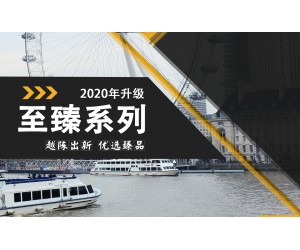Reverse takeovers is a topic that is now examinable in P4. This article aims to provide an explanation of reverse takeovers and to discuss the potential benefits and drawbacks associated with reverse takeovers (RTO).
REVERSE TAKEOVERS – AN EXPLANATION
An RTO involves a smaller quoted company taking over a larger unquoted company by a share-for-share exchange. In order to acquire the larger unquoted company, a large number of shares in the quoted company will have to be issued to the shareholders of the larger unquoted company. Hence, after the takeover the current shareholders in the larger unquoted company will hold the majority of the shares in the quoted company and will therefore have control of the quoted company.
On completion of an RTO, it is usual for the quoted company to be managed by the senior management team from the previously unquoted company and to take the name of the previously unquoted company.
Through the RTO, the previously unquoted company has effectively achieved a listing on the stock exchange. Eddie Stobbart, a road haulage company based in the UK, achieved a listing in this way in 2007 by combining with Westbury, a property and logistics company.
It is worth noting that in the USA, the term 'reverse merger' is often used as opposed to the term reverse takeover.
As ever, there are many variations on the basic idea. For instance, an RTO may involve a quoted company, which is actively trading, or a shell company, which is not actively trading.
RTOs have often been deemed to be the poor man’s initial public offering (IPO) perhaps due to US studies showing that companies achieving a listing through a reverse merger generally have lower survival rates and underperform compared to companies who have achieved their listing through a traditional IPO.
However, studies in the UK have shown that this is not necessarily the case. Indeed, during the period 1995 to 2012, RTOs seem to have survival rates similar to those for IPOs. The best results seem to arise with RTOs, which involve a quoted company that is actively trading, as the takeover is then able to benefit from synergy gains. Equally, small RTOs seem to perform better than larger ones.
REVERSE TAKEOVERS – THE POTENTIAL BENEFITS
As previously stated, an RTO is effectively a way that a currently unquoted company can achieve a listing. Hence, just as with an IPO, the company obtains the benefits of the public trading of its securities. These benefits include:
Easier access to capital markets
As a listed company, more finance is likely to be available and the cost of that finance is likely to be lower than if the company was still unquoted.
Higher company valuation
As the shares in the company will be listed, potential investors will deem the shares to be less risky as the company will have to abide by the relevant rules and regulations. Additionally, they will know that the shares are liquid and that whenever they wish to sell there will be a willing buyer. As a result of this, investors are likely to attribute a higher value to the shares.
Enhanced ability to carry out further takeovers
Once the shares in a company are listed, the company is able to acquire other companies through further share-for-share exchanges.
Enhanced ability to use share based incentive plans
Once the shares of a company are listed, share based incentive plans can be used as a key tool to attract and retain good quality employees.
In addition to the above, an RTO has a number of other potential benefits when compared to a normal IPO. These include the following:
Speed
An IPO can often take between one and two years to complete whereas an RTO can be completed in as little as 30 days. Furthermore, the work required to complete an IPO can mean that the managers of a company have less time to run the company, which may prove detrimental to the growth prospects of the company. The variability of market conditions can also make the speed of an RTO attractive, as in the time taken to prepare for an IPO, the market may deteriorate such that the IPO is not finally worth completing. Furthermore, particular circumstances in a market may make RTOs attractive. For instance, in China the IPO process is notoriously slow and there is usually a significant queue of companies waiting to carry out an IPO. An RTO allows a company to jump this queue.
Cost
Just as an IPO is a time-consuming process, it is also an expensive one due to the volume of work required by investment banks, sponsors, accountants and other advisers. An RTO will usually, but not always, cost less.
Availability
In a market downturn it is not easy to convince investors to support an IPO, whereas this does not seem to be the case with RTOs. Studies have shown that the volume of RTO transactions is far more resilient to market downturns. During the market correction that followed the bursting of the dotcom bubble, the number of RTOs actually increased while the number of IPOs fell very significantly.
Similarly, the fall in the number of RTOs was less than the fall in the number of IPOs following the more recent financial crisis. This is probably because, with an RTO, the deal is fundamentally between the shareholders of the quoted and unquoted companies involved and, hence, market sentiment has much less import.
Furthermore, while an RTO is often accompanied by a concurrent secondary offering to raise new finance, the amount of new finance being raised in both $ and % terms is usually less than that which is raised during an IPO. Hence, even in a downturn, investors are often more willing to support an RTO rather than an IPO.
Existing analyst coverage
A listed company subject to an RTO is likely to have existing analyst coverage and, after the RTO, this analyst coverage usually continues. However, companies that use an IPO may struggle to get significant analyst coverage especially if they are smaller. Without reasonable analyst coverage, potential investors may not have much awareness of the company and, hence, are unlikely to want to invest in the company.
REVERSE TAKEOVERS – THE POTENTIAL DRAWBACKS
RTOs do, however, have a number of potential drawbacks when compared to an IPO and any company considering an RTO should be aware of these.
Lack of expertise
A company achieving a listing through an RTO may find that it does not have the expertise to understand and deal with all the regulations and procedures that listed companies must comply with. The long process of listing through an IPO can be viewed as a valuable training period and any company that has been through the process is in a better position to deal with the requirements of the exchange than a company catapulted onto the market through an RTO. Hence, any company considering an RTO must consider the need to hire and/or retain staff from the existing listed company who are able to keep the company compliant with all the relevant regulations.
Reputation
As previously discussed, an RTO has often been viewed as a poor man’s IPO. Hence, companies that achieve their listing in this way may be viewed less favourably by investors than companies that have completed an IPO. To some extent, the reasons for this lie in the recent past.
In 2011 and 2012, there were a number of accounting scandals involving Chinese firms that gained access to the US markets through RTOs. Indeed, over 100 companies were suspended or delisted as a result. A public bulletin issued by the US Securities and Exchange Commission in June 2011 warned investors by stating that ‘many companies either fail or struggle to remain viable following a reverse merger’ and that there have been ‘instances of fraud and other abuses involving reverse merger companies’.
Since that time, the regulations and standards that apply to reverse mergers / RTOs on the US stock exchanges and other exchanges around the word have been tightened up in order to prevent similar problems arising in the future.
Risk
As a result of the lower level of scrutiny that is applied to an RTO compared to an IPO, investors must be aware of the higher level of risk that is attached to companies achieving a listing in this way. In particular, the unquoted company carrying out an RTO must ensure that there is a thorough investigation of the listed company which they are taking over so that all potential problems and liabilities are revealed.
Regulation
Although RTOs can generally be completed more quickly than an IPO as there is less regulation and scrutiny involved, it must be recognised that there are still a significant amount of regulatory hurdles to overcome. It should be understood that RTOs are, to some extent, combinations of acquisitions and IPOs and, as such, are potentially complex and difficult deals to manage. By way of example, two regulatory issues that may arise are now discussed:
Suspension
The Financial Conduct Authority’s (FCA) standard view is that when an RTO is announced or leaked, there will generally be insufficient information publicly available on the proposed transaction. In particular, information on the unquoted company contemplating the takeover could well be limited compared to the information that is available on listed companies. As a result of this, the listed company will not be able to accurately assess its financial position and inform the market. Hence, the FCA will often consider that a suspension of trading in the shares is appropriate. This standard view can be rebutted, but there is significant work required to achieve this. However, this work is essential as the listed company will not want to contemplate a scenario where its listing is suspended and is quite likely to walk away from the proposed transaction were this to occur.
Mandatory offer
If, individually or with their closely connected persons or friends, any shareholder in the unquoted company carrying out an RTO will on completion of the transaction hold shares that carry 30% or more of the voting rights of the listed company, then that shareholder will be required to make a general cash offer for the remaining shares in the listed company under the mandatory bid rule. This would obviously undermine the reason for doing the RTO in the first place. While the takeover panel will usually consent to a waiver of this requirement as long as certain conditions are satisfied, it is another regulatory obstacle which must be navigated around carefully.
Share price decrease
Many listed companies which could make potential RTO targets are in that position because of past problems. Hence, they may have shareholders who are keen to exit from the company as soon as a suitable opportunity arises and, hence, they may ‘dump’ their shares shortly after the RTO has completed. To safeguard against the risk of a ‘dump’ occurring, the shareholders may need to guarantee that they will not sell their shares until a certain period of time has elapsed since the deal is completed. This is called a lock-up and/or a lock-up period.
Cost
While a reverse takeover is usually cheaper than an IPO, there are still significant direct and indirect costs involved and, hence, the total cost can easily be far more than was originally anticipated. A number of these costs are now considered:
Regulatory costs
As mentioned previously, an RTO is a complex transaction and to ensure that the regulatory hurdles are successfully overcome will incur significant cost.
Acquisition cost
As a result of an RTO being seen as an easier and quicker option than an IPO, especially in the Chinese market, the value of potential listed company targets are often at a significant premium to their true value. Furthermore, the pressure to find a target has resulted in some unusual combinations such as a mobile computer game developer getting listed through the acquisition of a shoe company! It is hard to imagine there were any synergy gains available here and, indeed, resolving cultural and other issues that may well have arisen would have further added to the indirect cost of achieving the listing.
Investor relations
Although an RTO may benefit from existing analyst coverage, RTO transactions only really introduce liquidity to a previously private company if there is real investor interest in the company. In many cases, in order to generate this interest, a comprehensive investor relations and investor marketing programme will be required. This is another potential indirect cost of an RTO.
CONCLUSION
As with anything that seems too good to be true, it must be recognised that an RTO is not without significant complication and cost. Just as there is no such thing as a free lunch, there is also no easy way to achieve a listing.
William Parrott, freelance tutor and senior FM tutor, MAT Uganda
References:
BPP ACCA Approved Study Text
Reverse takeovers: No longer the poor man’s IPO, M&A Research Centre at Cass Business School
Reverse Takeovers, Stepping through the looking glass, Karen Davies, Dominic Ross and James Fletcher of Ashurst LLP
Leapfrogging the IPO gridlock: Chinese companies get a taste for reverse takeovers, Elzio Barreto
各位学习ACCA的小伙伴们,现在离12月考试季只有一个多月的时间了,该投入到紧张的复习备考状态中了,你准备得怎么样了?中博诚通小编推荐给你ACCA最新的P4考官文章,希望对你复习备考有所帮助。















